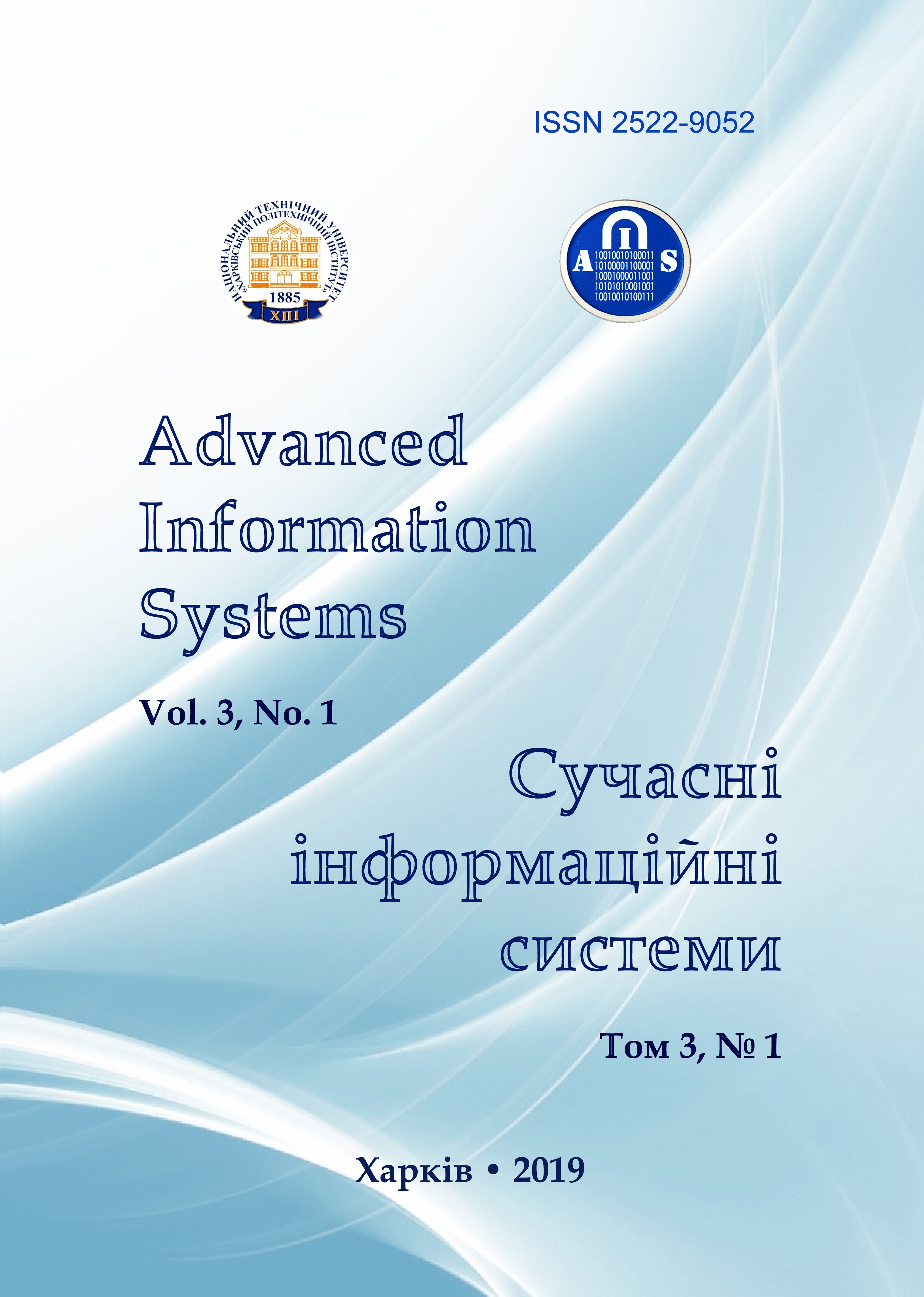MODELS OF MAKING DECISIONS TO SELECT THE TECHNIQUES FOR COUNTERING INNOVATIVE PROJECT RISKS
Main Article Content
Abstract
The subject matter of the study is the risks of an innovative project. The goal of the article is to develop models of making decisions to select the techniques for countering innovative project risks. The following tasks are solved in the article: the features of managing innovative project risk are analyzed, a generalized model of the project risk management is developed, the mechanisms to counter the innovative risks are analyzed, a decision tree is developed to select the technique to counter innovative project risks, a formalized method and a process model are developed to select a preferred technique for risk insurance. The following methods are applied – system analysis, project approach, risk-based approach, heuristic decision-making methods, process models. The following results are obtained: the analysis of the features of managing innovative project risks showed the possibility of reducing the cost of risk by modern techniques of countering financial risks, including insurance in its various forms. A generalized model of managing innovative project risks is proposed; this model includes the stages of developing possible measures to counter risks and making decisions on selecting the preferred option. The probable types of innovation project risks, methods of their assessment under uncertainty are considered. The techniques to counter innovation risks, including the types of project risk insurance, are analyzed. A decision tree is developed to select a technique for countering risk based on a number of its characteristics that are defined according to the qualitative and classification scale. The suggested technique is formalized for selecting a mechanism to insure project risks, taking into account the probabilities of specific risks, their costs and the general insurance fund of a project. A process model is developed to select the preferred technique of insurance, taking into account the integral assessment of an innovation risk. Conclusions. The use of the developed models while planning the risk management of an innovative project increases the validity and reliability of decisions concerning the selection of a technique for countering risks, taking into account the characteristics of specific risks, the magnitude of the integral risk and the features of a particular project.
Article Details
References
Guan, J.C. (2006), “A study of the relationship between competitiveness and technological innovation capability based on DEA models”, European Journal of Operational, Vol. 170, Issue 3, pp. 971–986.
Kutsch, E. and Hall, M. (2010), “Deliberate ignorance in project risk management”, International journal of project management, Vol. 28, Issue 3, pp. 245-255.
Huchzermeier, A. and Christoph, H.L. (2001), “Project management under risk: Using the real options approach to evaluate flexibility in R…D”, Management Science, Vol 47, Issue 1, pp. 85-101.
Raz, T. and Michael, E. (2001), “Use and benefits of tools for project risk management”, International journal of project management, Vol 19, Issue 1, pp. 9–17.
Momot, D. (2018), “Risk assessment of investment in the ART-industry market: systematization of theoretical and methodological approaches”, Technologies and Scientific Solutions for Industries, No. 4(6), pp. 127–136. DOI: https://doi.org/10.30837/2522-9818.2018.6.127
Bucurean, M., Tarca, N. and Horea, I. (2015), “The innovation and the risks’ management”, Fascicle of Management and Technological Engineering, Vol. XXIV (XIV), Issue 3, pp. 312-319.
Kosenko, V. (2017), “Principles and structure of the methodology of risk-adaptive management of parameters of information and telecommunication networks of critical application systems”, Innovative Technologies and Scientific Solutions for Industries, No. 1 (1), pp. 45–51, DOI: https://doi.org/10.30837/2522-9818.2017.1.046
Bushuyev, S.D., Bushuyev, D.A. and Yaroshenko, R.F. (2017), “Deformation of the field of competencies in innovative projects”, Bulletin of the Kharkov Polytechnic Institute, Kharkiv: NTU "KhPI", No. 2 (1224), pp. 3–7.
Ponomarenko, P.I. and Haver, V.N. (2012), “Rationale for the study of risks in the stages of implementation of the innovation project”, Economy of industry, No. 3-4, pp. 59–60.
Golovach, T.V., Grushevitska, A.B., Shvid, V.V. (2010), “Risk Management: Reputation and Organizing at Entrepreneurship”, Bulletin of the Khmelnitsky National University, KhNU, Khmelnitsky, No. 3, pp. 157-163.
Kosenko, V. (2018), Decision support system in planning investment project, Innovative Technologies and Scientific Solutions for Industries, No. 4(6), P. 113–119. DOI: https://doi.org/10.30837/2522-9818.2018.6.113
Gerasimchuk, V.G., Shkolna, O.V. (2008), Risk management in foreign venture financing of innovation projects. – [Upravlіnnya rizikami v іnozemnomu venchurnomu fіnansuvannі іnnovacіjnih proektіv], Publishing House of the National University "Lviv Polytechnic" Problems of Economics and Management [Vidavnictvo Nacіonal'nogo unіversitetu "L'vіvs'ka polіtekhnіka" Problemi ekonomіki ta upravlіnnya], No. 628, P. 424–429.
Groznij, І.S. (2004), Analysis and Determination of Project Risks as a Condition for the Transparency of Innovative Venture Projects [Analіz ta viznachenіst' proektnih rizikіv yak umova transparentnostі іnnovacіjno-venchurnih proektіv], Coll. of sci. papers of DonNTU: "Methods of updating and mechanisms of financial development of enterprises": Ser. "Economy" [Zb. nauk. pr. DonNTU: „Metodi onovlennya і mekhanіzmi fіnansovogo rozvitku pіdpriєmstv”: Ser. “Ekonomіka”], Donetsk: DonDUU, Vol.V, Issue 41, P. 109–121.
Bogutska, O. (2018), Financial and economic mechanism for ensuring investment activity of enterprises according to institutional models of financing the real sector of the economy. Innovative Technologies and Scientific Solutions for Industries, No. 3(5), P. 79-86. DOI:https://doi.org/10.30837/2522-9818.2018.5.079
Svіrіdova, S. S. (2011), Risk Management of the Life Cycle of the Innovation Project [Upravlіnnya rizikami zhittevogo ciklu іnnovacіjnogo proektu], Economy: Realities of Time [Ekonomіka: realіi chasu], Odessa: Odessa National Polytechnic University, No. 1, P. 103-108.
Babenko, V., Alisejko, E., Kochuyeva, Z. (2017), The task of minimal adaptive management of innovative processes at an enterprise with risks, Innovative Technologies and Scientific Solutions for Industries, No. 1(1), P. 6-13.
DOI: https://doi.org/10.30837/2522-9818.2017.1.006
Basel Committee on Banking Supervision, available at: http://www.bis.org/bcbs/index.htm
Enterprise Risk Management – Integrated Framework, available at: http://www.coso.org/publications.htm
Australian/New Zealand Standard AS/NZS 4360:2004, Section 4.3: Risk management planning, P. 26,
available at: www.standards.com.au
Pavlyuk, S. M. (2003), Credit Risks and their Management [Kreditnі riziki ta upravlіnnya nimi], Finance of Ukraine, No. 11, P. 105 – 111.
Minkina, G. O. (2010), Insurance as an Instrument for Risk Management of Agroindustrial Enterprises, Scientific Bulletin of the National University of Bioresources and Natural Resources of Ukraine, Vol. 154, P. 117-121.
